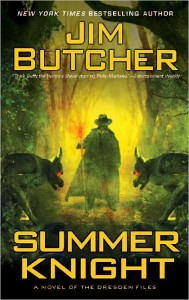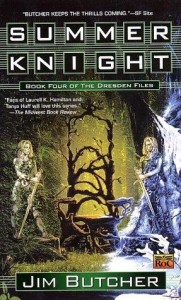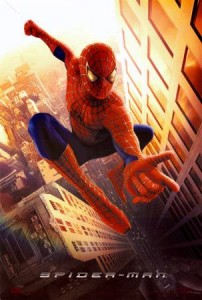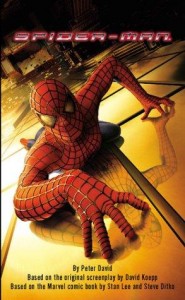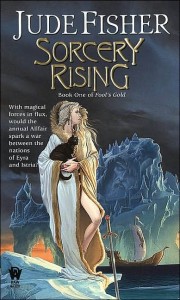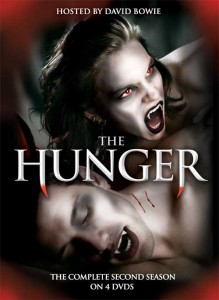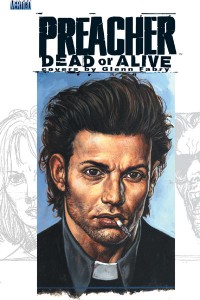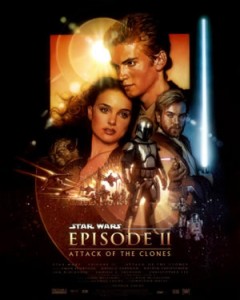 A long time ago, in a galaxy far, far away, a man took a whole slew of mythic elements and cultural themes and wove them into one of the great stories of the 20th Century: The farm boy, ignorant of his true origins, who ultimately becomes a great hero; The rogue with a grudging heart of gold and his beastly side-kick; The beautiful princess in distress who is quite capable of fighting for herself, thank you; The fallen hero in black who redeems himself at the very end, after defeating the evil Emperor;
A long time ago, in a galaxy far, far away, a man took a whole slew of mythic elements and cultural themes and wove them into one of the great stories of the 20th Century: The farm boy, ignorant of his true origins, who ultimately becomes a great hero; The rogue with a grudging heart of gold and his beastly side-kick; The beautiful princess in distress who is quite capable of fighting for herself, thank you; The fallen hero in black who redeems himself at the very end, after defeating the evil Emperor;
A rebellion against a corrupt empire. Derring-do, swash-buckling heroics, fights galore and, throughout it all, the theme of good versus evil. The original Star Wars trilogy blew away all records and resonated with an entire generation. Decades later, the visionary who took all those old elements from myth and pulp adventures, returned to tell what might be the greatest story of a hero’s fall in centuries.
Star Wars: Episode I had a lot to live up to. Its sequel, the middle of the projected trilogy, following the rise and fall of Anakin Skywalker, later known as Darth Vader, has even more to live up to. The hype surrounding this movie was less than for Episode I, with far fewer tie-ins and merchandising. The stakes were higher. After this, only one film remains, and we know how it all ends up, right?
Episode II – Attack of the Clones is an extraordinarily ambitious project that has had a critical spotlight on it from the second it was planned. The big question is, is it any good?
Yes … and no. Where Episode II is concerned, when it’s good, it’s fantastic. When it’s bad, it klunks resoundingly.
I see Episode II as two different movies unwittingly woven together, not entirely of their own free will. The first plot, and by far the more engaging, is the roller-coaster investigation of a pair of Jedi Knights into an assassination attempt. Our old friends Obi-Wan Kenobi (as masterfully played by Ewan MacGregor as in Episode I, filling as he does the legendary shoes of Sir Alec Guinness) and his apprentice, a teenaged Anakin Skywalker (played here by Hayden Christensen) are appointed to protect former Queen and now Senator for Naboo, Padme Amidala (Natalie Portman reprising the role from the previous movie). As bodyguards, they’re overkill. As investigators, they’re in over their heads. Conspiracy after plot after manipulation is revealed, as the trio, accompanied by faithful droid R2-D2, leave the Republic’s capital planet of Coruscant, splitting up to pursue different leads. Bounty hunters, clones, battle droids, aliens, armies, and even Dark Side Jedi, the dreaded Sith, await them. This is by far the more interesting of the plots, building as it does upon each new revelation, taking our heroes from the cloud-penetrating heights of Coruscant to the quiet beauty of Naboo to the deserts of Tatooine to the storm-churned oceans of one planet and a climatic showdown on yet another world.
The second plot is the romance building between Anakin and Amidala, a romance forbidden by the Jedi Order and by common sense. He’s sworn to protect the galaxy, and she’s a politician. She’s older than him by several years, and he’s struggling with teenage hormones. He’s rash, head-strong, moody, and prone to bucking authority. She’s destined to play a pivotal part in the future of the Republic. He’s just her bodyguard. Right? Well, Episode II -was- billed as a romance, and it’s absolutely no secret whatsoever that the two of them are to fall in love. So watching them actually do it is like watching a play to which you know every word. There’s no real mystery, except ‘how long will it take, and who will give in first?’ This plot is slow and feels out of place at times, forced at others, with Anakin spouting dialogue so painful it’s no wonder the Jedi Masters were wincing back on Coruscant. Amidala isn’t entirely sure what she wants, but she looks like she’d rather be dealing with political infighting rather than a tempestuous teenager with a crush and a burgeoning God complex. (“Someday I’ll be the most powerful Jedi of all!” he rages at one point. “It’s all Obi-Wan’s fault! He’s just jealous!” at another.)
For the most part, the separate plots go their own ways, with Obi-Wan playing swash-buckling galactic investigator, fighting bounty hunter Jango Fett (father of the much less talkative Boba Fett of the original trilogy) and journeying to distant planets on the strength of a hunch, and Anakin and Amidala enjoying a romantic getaway on Naboo before taking a detour to Tatooine to wrap up some old business, pick up an old friend, and set the stage for some familial background. Ultimately, it all comes together in a battle featuring a cast of thousands.
Highlights include Christopher Lee’s performance as the scheming Count Dooku, Samuel L. Jackson as the Jedi Master Mace Windu, and Frank Oz as everyone’s favorite little green guy, Yoda. Folks, in this movie Yoda earns his keep with some serious moves. We’re talking Muppet meets Matrix, a Hong Kong action cinema puppet with a light saber and a mission. Who’s the man? Yoda’s the man. But enough said.
Acting-wise, Ewan MacGregor is in superb form, handling the dry wit and exasperated authority of Obi-Wan with tremendous skill. Comparatively, Hayden Christensen doesn’t seem to know entirely what to do with himself. Either he’s spouting anguished lines of love to Amidala, or he’s indulging in over-the-top angst and rebellion with Obi-Wan. He doesn’t seem quite comfortable in the role, and shifts from wooden to over-acting regularly. Natalie Portman does the best she can with her role, looking vaguely decorative and bored for the first two-thirds of the movie, and then coming alive as soon as she’s given a gun and something productive to do. From then on, she’s having a blast, and blasting everything in sight. Ian McDiarmid, as the manipulating Chancellor Palpatine, seems to be genuinely enjoying himself, playing the subtle villain for all he’s worth. Temuera Morrison is both doting father and hardened bounty hunter, perfect for the role of Jango Fett, carrying it with sophistication and savagery. All in all, it’s quite the talented cast, with only a few misfires along the way.
The special effects and CGI in this movie are absolutely top-notch. Alien scenery, bizarre races, deadly creatures, massive armies, planet-wide storms, chaotic meteor fields, and light saber duels are all rendered in full-color full-reality detail. The decades George Lucas has put into having his studios develop this technology has paid off, making this a visually stunning film that’s sure to take home a few awards. The cinematography is exquisite, taking our heroes on dizzying drops, throwing them into deadly battles, hurling them over the sides of mile-high buildings, and sending them across distant fields. The music is typically evocative, John Williams giving us both the old, familiar Star Wars fanfare and new themes that address the movie’s progress. Though at times it’s a bit over the top, his work has been so identified with the series, it wouldn’t be Star Wars without him.
For those who are worried, you may relax. Jar-Jar Binks -does- appear, but his screen-time is limited to a few key scenes. Of course, that’s not much of an assurance that he won’t accidentally doom the Republic by tripping over someone… The “cute kid” quota is met by Daniel Logan, who pulls off a darkly handsome, sullen, tousle-haired moppet known better as Boba Fett. The kid is good with those soulful looks and loathsome glares, and we see a hint of the man he’ll become late in the movie.
Overall? Star Wars: Episode II – Attack of the Clones is a damned fine film. Visually, it’s extraordinary. Plot-wise, it meanders and clunks like a Yugo in city traffic. Like the rumored “edit” of Episode I that some clever person did to excise Jar-Jar, I foresee someone cutting out 95% of the Anakin/Amidala subplot to streamline this movie into an action-packed intrigue. Sit through the bad parts, and you’ll be rewarded by the end, which answers some questions, and opens the floodgates for a lot more.
Episode III is the one that will decide who lives, who dies, and who takes home the gold. Fans of Star Wars will undoubtedly want to see it. Those teetering on the fence, you’ve been informed. Episode II is both a very good movie, and a clumsy one. Go see it, and have a blast.
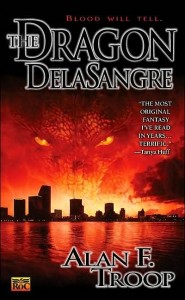 Hidden away on a small island somewhere off the coast of Florida, near Miami, is a deadly, dangerous secret. The island is called Caya DelaSangre, the Blood Key, and for over four centuries it has been the home of a unique family, the DelaSangres. Now reduced to a mere two, father and son, they are not normal people. Rather, they are dragons, shapeshifters who soar the skies, hunt humans to satisfy their predatory cravings, and manipulate the lives of mortals out of necessity and whim. Once they were pirates; now they are business tycoons, running powerful companies from afar and owning more than anyone realizes.
Hidden away on a small island somewhere off the coast of Florida, near Miami, is a deadly, dangerous secret. The island is called Caya DelaSangre, the Blood Key, and for over four centuries it has been the home of a unique family, the DelaSangres. Now reduced to a mere two, father and son, they are not normal people. Rather, they are dragons, shapeshifters who soar the skies, hunt humans to satisfy their predatory cravings, and manipulate the lives of mortals out of necessity and whim. Once they were pirates; now they are business tycoons, running powerful companies from afar and owning more than anyone realizes.
